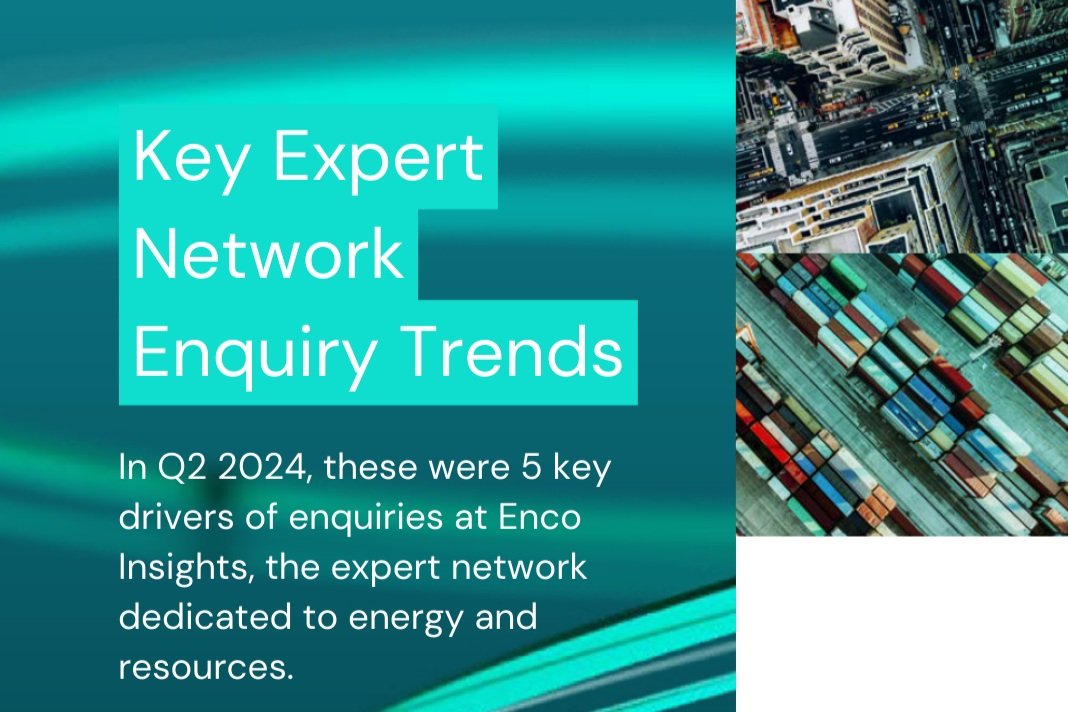Graphite and the Energy Transition
The indispensable anode
Graphite is the anode of choice in the energy transition. How and where is it made? Paul Chapman, host of the Enco Insights Podcast asks Simon Moores, founder and CEO of Benchmark Mineral Intelligence, a price reporting agency and intelligence provider for lithium-ion battery-to-EV value chains.
Paul Chapman: What is graphite's role in battery chemistry?
Simon Moores: Graphite is the primary anode of choice. It's the opposite side to the cathode and all those key minerals such as lithium, cobalt, nickel and manganese that we're familiar with. Graphite is the opposite side to the battery and it’s the biggest input into lithium ion batteries by weight.
Paul: How is it produced and processed to end up in a battery - and indeed, where is that done?
Simon: There are two routes. First, there is graphite which you can mine naturally in the form of flake graphite. That gets processed into what we call spherical graphite. It's a physical milling process to turn it into micro spheres. It looks like a really fine powder, but it’s actually spheres. Then these spheres get coated. That product then goes on to make natural graphite anode material in gigafactories.
Synthetic anodes come from petroleum coke. It starts with the oil industry - which is a quite an interesting twist for electric vehicles. The coke produced is the carbon feedstock that goes into making synthetic graphite. This is graphetised for a long time with a lot of electricity to make it highly pure. That's then crushed down and made into a synthetic graphite powder. You can use natural graphite powder or synthetic. A lot of the time it's blended because synthetic graphite is more expensive than natural graphite.
“The alarm bells are massively ringing. I think graphite’s been ignored for 10 years of this global battery arms race. And for the first time everyone’s talking about graphite. ”
Paul: Could you talk about where it is produced?
Simon: China mines about 70% of flake graphite, but actually it produces up to 80% of natural graphite anodes. Unlike the other raw materials for batteries, China is well endowed with natural flake graphite deposits. It’s built up its anode position based on natural graphite.
You've also got a big synthetic graphite anode market in China. A lot of the synthetic graphite producers in China started by making anode rods for electric car furnaces and different furnaces to melt metal. Of course it could also be crushed into fine powder for anode material as well. China dominates that supply chain as well. 70% of synthetic graphite and 97% of synthetic graphite anode is made in China. So China is absolutely dominant in this market.
Discover the range of industries we work with
Paul: And that is why recent announcements from China talking about export controls around graphite have sent shockwaves through the battery supply chain.
Simon: Yes. China is now putting Graphite on its radar as one of the key inputs into a battery. The Chinese authorities want to ensure that people exporting certain graphite products - especially batteries and EVs - have to have a licence.
“It’s much like lithium was five years ago. You produce it, you do a private contract with the people you are selling it to. It’s very old school from that perspective.”
This isn’t necessarily the biggest news - it's not a rare earths moment. But it sent similar shockwaves through the global industry because all of a sudden people making batteries and electric vehicles that haven't invested in any form of graphite supply chain have realized how dominant China is in this space.
So even though there have been no disruptions yet - and we don't foresee there being massive disruption in the short to medium term - the alarm bells are massively ringing. I think graphite's been ignored for 10 years of this global battery arms race. And for the first time everyone's talking about graphite.
Navigate the
energy transition with confidence
Paul: And how is graphite priced?
Simon: It’s private contracts between buyers and sellers. Benchmark publishes weekly and monthly graphite prices from synthetic to natural to the feedstocks, to the anode material. It's much like lithium was five years ago. You produce it, you do a private contract with the people you are selling it to. It's very old school from that perspective.
Listen to Simon Moores’ full Enco Insights Podcast interview on Apple or Spotify. Subscribe for regular expert insights.






